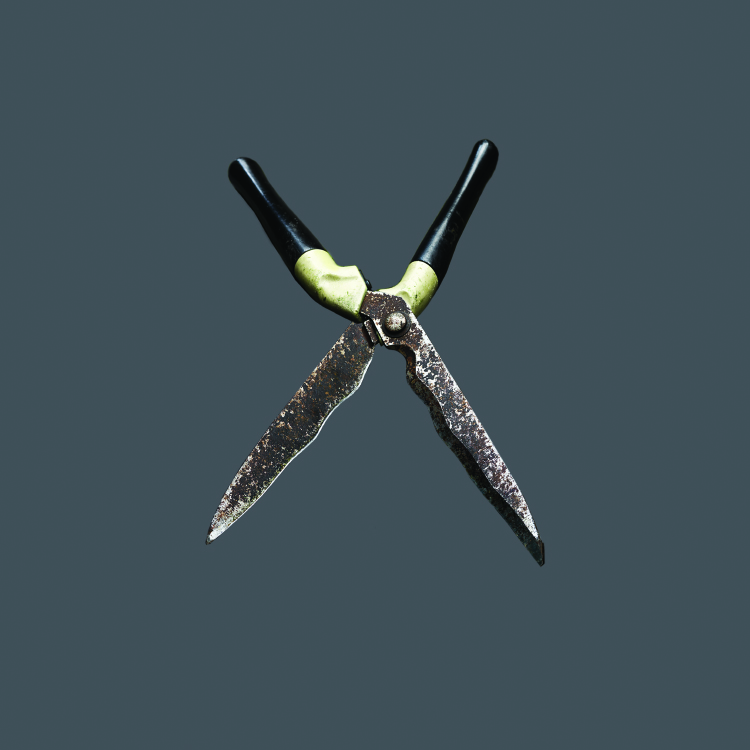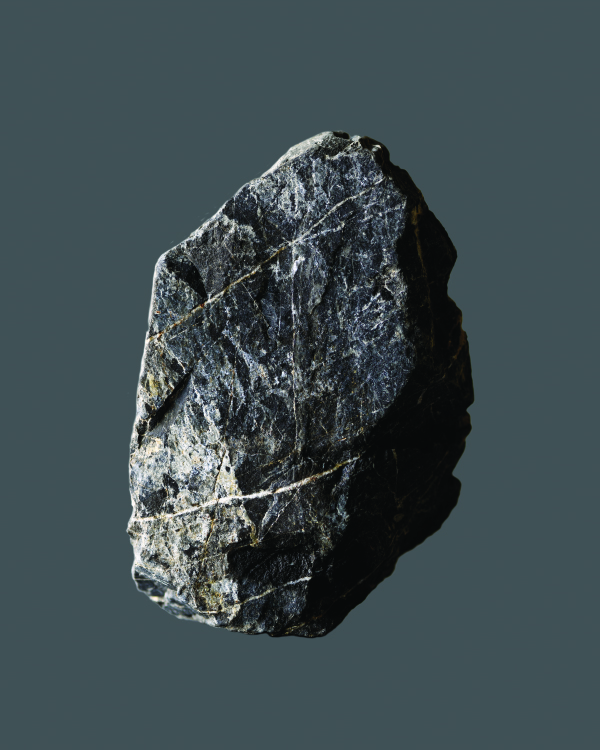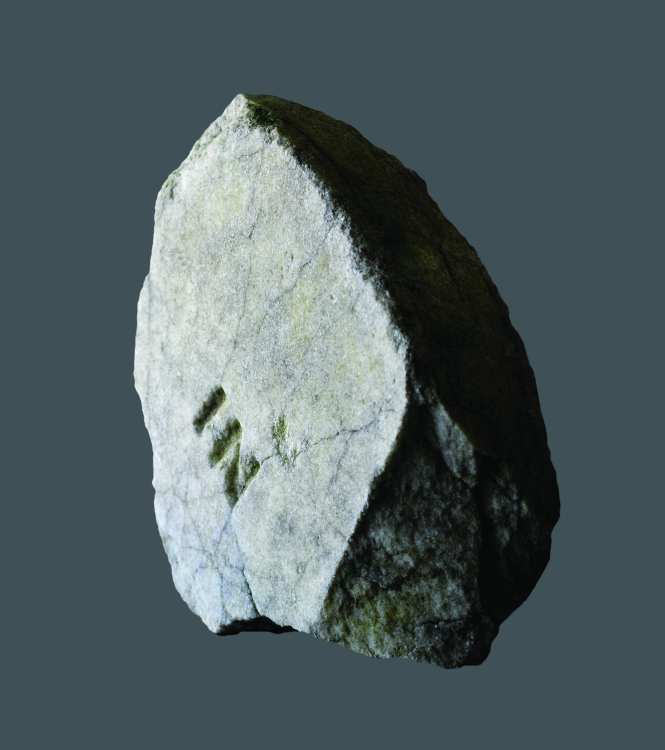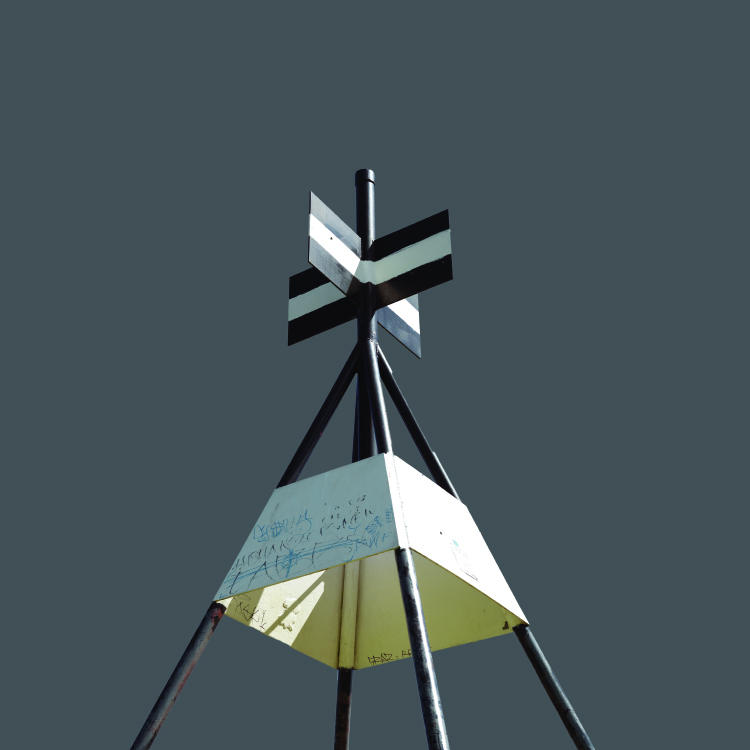Co-orbital
New Photographs by Becky Nunes
KRISELLE BAKER

BECKY NUNES Ceres 2014 Digital print, 600 x 600 mm.
Wandering through the grave sites and navigating the divide of motorway and traffic islands that split Grafton Gully is a somewhat precarious thing to do. The gully’s function has changed over the years from food basket and waterway in pre-contact New Zealand to the first official cemetery in Auckland in 1842. In the mid-1960s, more than 4000 graves were exhumed to make way for motorway construction. For Becky Nunes this area represents a prism of shifting values in which there has been a reprioritising of our relationship with the land. This is the subject of the artist’s latest series.
Three of the photographs from the series show fragments of stone found while walking the trails of the gully. For Nunes the stones resonate with the changing history of the area. They include a piece of basalt (volcanic spume from Orakei Basin), a small chip from a headstone, long since demolished, and a fragment of quartz-fill from the construction of the Auckland Business School. Two other works in the series are of a typical trig from a hilltop and a pair of shears ― objects that intimate intervention and a breach of existing values.
The stones are depicted vastly larger than life-size and as clear-cut forms against a smooth pantone grey. It surprised me when seeing them in the gallery how they seemed weightless, as if they were floating in space. I had expected a sense of gravity, of a dead weight. That weightlessness suggests another dimension to the works made more explicit in the title of the series, Co-orbital. In astronomy, a co-orbital configuration occurs when two or more celestial objects orbit at the same, or very similar distance from their parent body, i.e., they are in a 1:1 mean motion resonance. This is a description of how objects exercise an influence over each other. The notion of co-orbital is the key to understanding the significance of each of the objects in the series that exist in a form of co-orbital ‘mean motion resonance’―a resonance that, although intangible, can nonetheless be experienced and is a kind of truth.
One of the key texts referred to by Nunes in her research for her Masters Degree in Photography, of which this exhibition is a part, is Richard Tarnas’ Cosmos and Psyche. Tarnas explores the concepts of astrology, although he is aware that amongst the general public it is still considered ‘the gold standard for superstition’. I wondered while writing this whether Eleanor Catton, the 2013 Man Booker Prize-winning New Zealand author of The Luminaries, had also read Tarnas. Catton, as she has said in interviews, became obsessed with astrology while writing The Luminaries, in which the actions of each of the characters are governed by their astrological signs. A structuring device she chose to use having become as she has said ‘really taken with the idea that what it [astrology] is fundamentally about is there is no truth except for truth in relation: nothing is objectively true.’ These are parallel concepts to those that Nunes is exploring―the effect that objects can have on one another and how objects and land can become layered with these resonances.

BECKY NUNES Astrae 2014 Digital print, 1500 x 1160 mm.

BECKY NUNES Vesta 2014 Digital print, 1500 x 1160 mm.

BECKY NUNES Prosepina 2014 Digital print, 1500 x 1160 mm.

BECKY NUNES Bellona 2014 Digital print, 600 x 600 mm.
